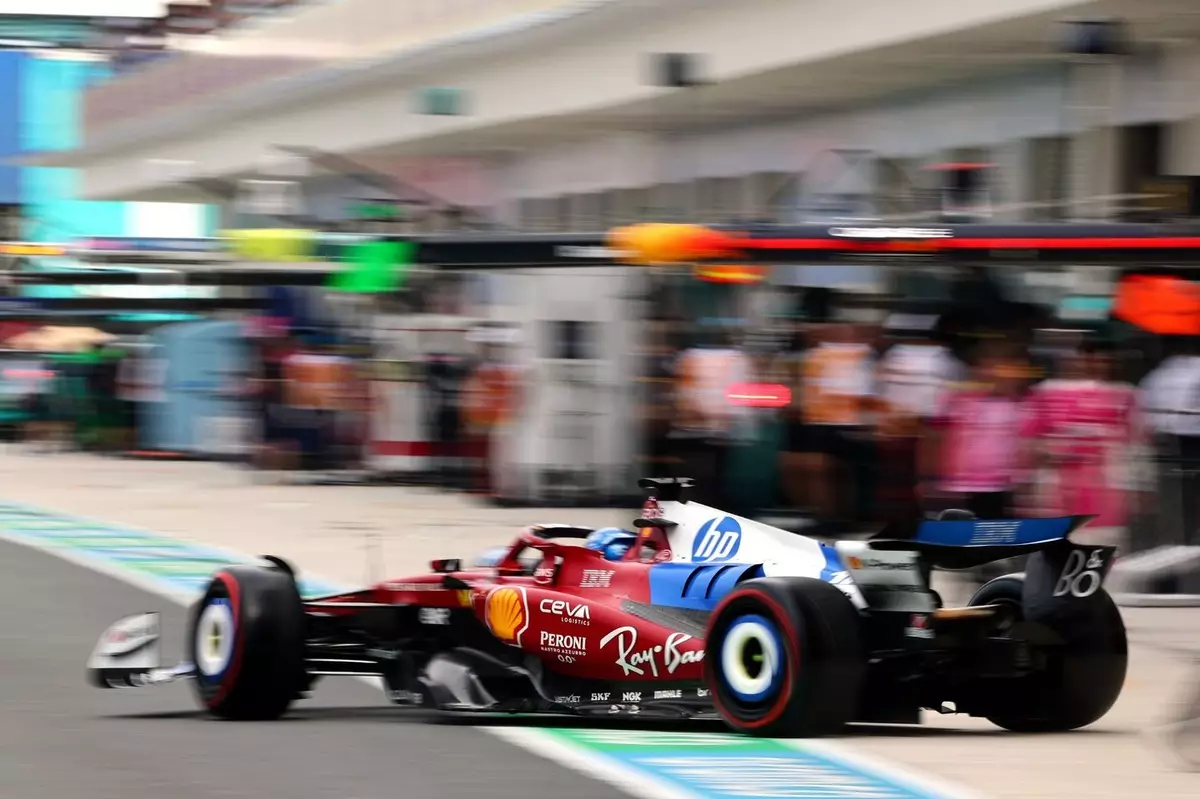Ferrari’s Struggles: The Frustrating Reality Behind Leclerc’s Performance
As an avid Formula 1 fan, there are few things as disheartening as watching a driver put everything on the line, only to find themselves outpaced by the competition. This was exactly the case for Charles Leclerc during the 2025 Miami Grand Prix. Despite his best efforts, he could only manage to qualify eighth on the grid. For a team like Ferrari, with its storied history and high expectations, this result was nothing short of a bitter pill to swallow.
Leclerc’s post-qualifying remarks revealed a harsh truth: Ferrari is currently running at full steam yet still lagging behind their rivals. This struggle isn’t just about speed; it’s about the emotional weight that comes with knowing you’re giving it your all but it’s not enough. Competing against giants like Red Bull, McLaren, and Mercedes adds pressure and frustration, leading Ferrari and Leclerc to question their strategy and engineering choices.
Key Takeaways
- Leclerc’s performance highlights Ferrari’s struggle to remain competitive.
- The limitations in Ferrari’s car design are significant in their current challenges.
- Reflection on past mistakes is crucial for future success.
Technical Limitations and Competitive Disadvantages
The core issue with Ferrari’s current performance lies in their car’s design limitations, particularly concerning downforce. In Formula 1, where every millisecond counts, these deficiencies make it difficult for Ferrari to compete effectively. Leclerc’s comments after qualifying highlighted this frustration. It’s not just about being fast; it’s about being optimally designed for every track condition. With both Williams cars qualifying ahead of him in Miami, it’s clear that improvements are necessary if Ferrari wants to regain its competitive edge.

The Miami circuit with its slow-speed corners exposed Ferrari’s vulnerabilities further. While Leclerc has shown commendable performance on different circuits, Miami underscored areas where the car couldn’t meet its potential. Successful teams craft cars adept at handling a wide variety of tracks. The inability to adapt illustrates broader issues with the car’s design philosophy that need addressing if they hope to compete consistently across all circuits.
Lessons from Mistakes A Need for Reflection
Leclerc’s pre-race crash during wet conditions served as a stark reminder of the importance of decision-making within the team. His admission that opting for intermediate tires was a mistake highlights how off-track decisions can be just as impactful as those made during the race. These insights suggest a need for ongoing reflection and improvement. For a team with Ferrari’s legacy, embracing these lessons is vital to maintaining their reputation and striving toward excellence.
The pressure extends beyond individual performance; it emphasizes teamwork and strategic agility in an ever-demanding sport. Every race weekend tests not only speed but also adaptability and resilience. Learning from each experience is essential for making quick adjustments that could be the difference between victory and defeat in such a fast-paced environment.
Looking Ahead The Road to Recovery
Despite current challenges, there’s hope for rejuvenation within Ferrari if they can learn from Leclerc’s experiences and broader team insights. Recognizing the car’s limitations is the first step towards pushing boundaries further. If channeled correctly, Leclerc’s awareness could benefit not just his personal performance but also inspire strategic shifts within the entire team.

Reclaiming competitiveness extends beyond technical advances; it requires building a foundation of resilience, adaptability, and an unwavering drive for improvement. Formula 1 remains an arena where only the strongest survive, and for Ferrari, confronting hard truths while embracing necessary changes might be pivotal steps toward re-establishing their dominance in the sport.
Final Thoughts
As fans and followers of Formula 1, we understand that ups and downs are part of any journey toward greatness. For Ferrari and Charles Leclerc, this period serves as both a challenge and an opportunity to redefine strategies and build upon past experiences. It’s about harnessing lessons learned from setbacks and turning them into stepping stones for future success. The path ahead may not be easy, but it is filled with potential for those willing to adapt and persevere — qualities that have always been at the heart of motorsport excellence.
Ferrari
Formula 1
Charles Leclerc


Leave a Reply